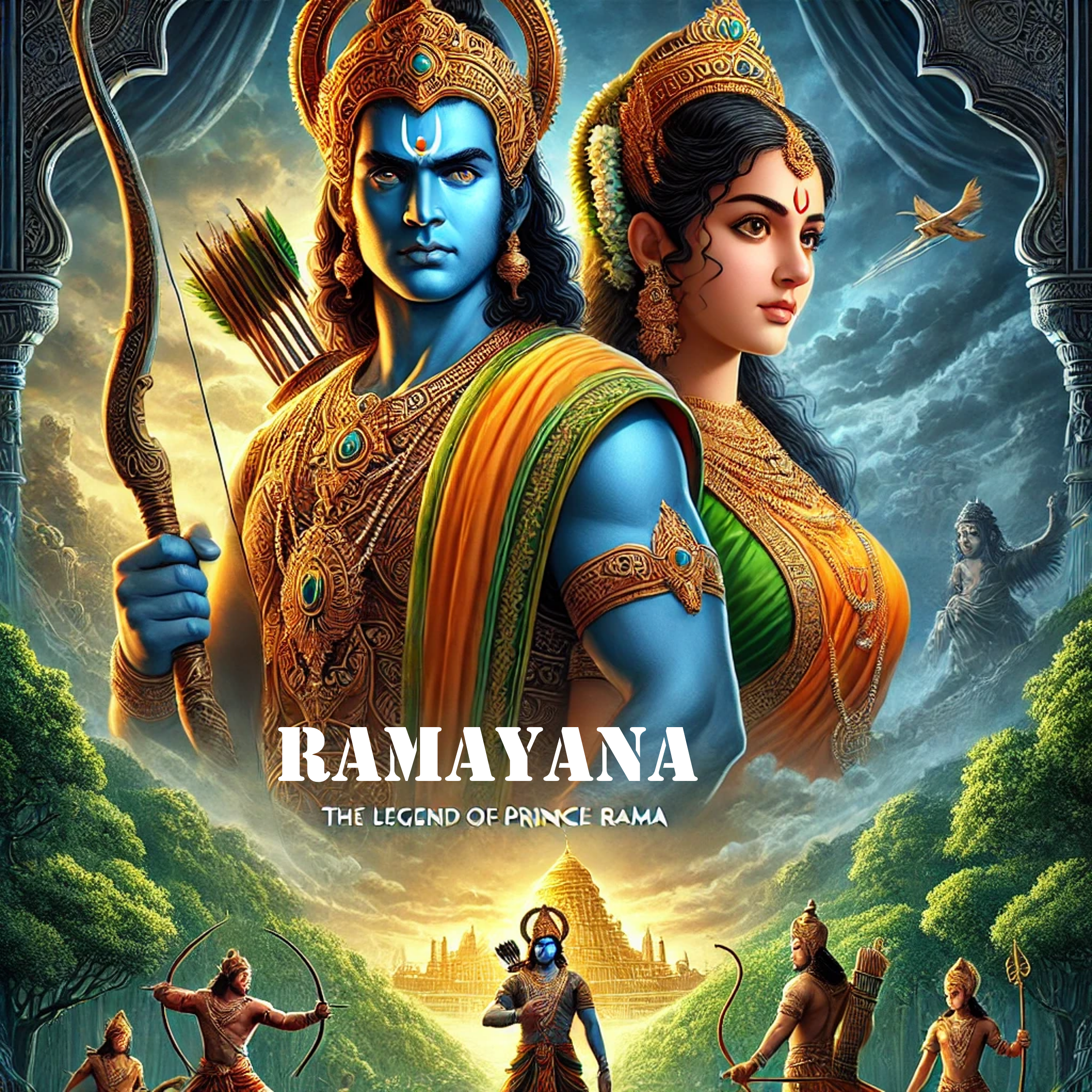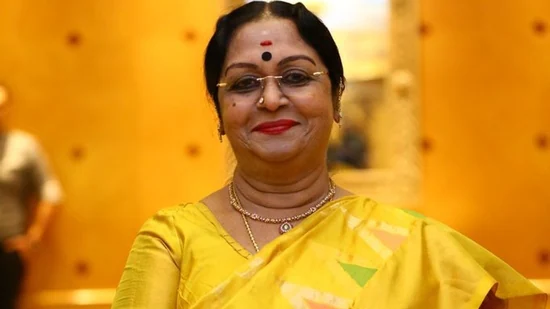Ramayana: The Legend of Prince Rama is one of the most revered animated movies that would articulate the legend of the ancient Indian epic Ramayana. This Indo-Japanese co-production, directed by Yugo Sako and Ram Mohan, was released in 1992, wherein it puts into animation the epic story of Prince Rama, a tale that had enthralled audiences across the world. It is not only close to the core of the original scripture, but also opens up to international viewers this rich cultural treasure of India through a combination of vibrant pictures.
In this article, we shall analyze the ageless appeal of Ramayana: The Legend of Prince Rama, its artistic brilliance, the importance culturally, and what highlights make it a work of art.
Plot Overview
The central theme of Ramayana: The Legend of Prince Rama involves the story of Prince Rama, who is the seventh incarnation of Lord Vishnu. He was entrusted with the responsibility of attaining dharma, or doing what is right and just, to rescue his wife, Sita, kidnapped by the powerful demon king Ravana. The story traces the journey of Prince Rama, his devoted brother Lakshmana, and the faithful Hanuman as they trek out to rescue Sita and bring the world back in order.
The film begins with King Dasharatha, ruler of Ayodhya, holding a contest for the final decision regarding Sita’s marriage. Rama, the eldest son of Dasharatha, wins the contest and marries Sita. However, Rama’s way to kingship is blocked by palace intrigues when he is exiled to the forest for 14 years. His exile becomes the stage for his final battle with Ravana.
The movie will soundly weave themes of love, sacrifice, duty, and morality through its movie presentation, thus it is a tear-jerking and well-thought movie.
Animation and Visual Aesthetics
A feature of Ramayana: The Legend of Prince Rama is the magnificent animation. The style was introduced through work from Indian and Japanese animators and blended the traditional Indian art forms with precision and elegance of the Japanese, which makes them unique animation techniques.
The film’s animation is bright, having fine details on the characters and nicely rendered environments to make ancient Indian landscapes come alive. It really comes alive in the depiction of this epic struggle between Prince Rama and Ravana through chaotic and dramatic action sequences that catch the grandeur and intensity of the story.
It is also rich in color symbolism. Shades of blue characterized Prince Rama, giving it a peaceful atmosphere with a sense of divinity and strength, while darker tones were used in Ravana to represent malevolence. The details the costumes, weaponry, and whatnot reveal a love for the source material.
Voice Acting and Music
The voice acting of Ramayana: The Legend of Prince Rama added another dimension to the depth of emotional level the film reaches. The film was originally produced in English, and later on it was dubbed into many languages such as Hindi and Japanese for the expansion of audiences.
The voice that reaches us as Rama is one of composure and determined virtue. Ravana’s voice goes out deep and menacing-the persona himself, I suppose. Sita’s voice has a grace to it as well as purity-a reminder of her being the embodiment of virtue.
Music composed by Vanraj Bhatia makes the movie emotionally worthy. Album features authentic Indian instruments and melodies to support the cultural context of the movie. Powerful rhythmic music is used on the battle scenes; elsewhere, softer and more ethereal tunes describe poignant moments between Prince Rama and Sita.
Cultural and Religious Significance
The Ramayana is one of two great epics of India, and it fills a very special place in the annals of Hindu culture and religion as a whole. It’s a guide to morals, teaching lessons about what constitutes righteousness, devotion, and duty. He is regarded as a paragon of the ideal man, possessing in his keeping the virtues of truth, loyalty, and bravery.
Ramayana: The Legend of Prince Rama follows these principles. It is a must-not miss documentary introduction to the epic for those who do not know anything about Hindu mythology. The movie focuses several parts from the Ramayana, especially on the exile of Prince Rama, the abduction of Sita, the formation of alliances with Hanuman and the Vanara monkey army, and the battle with Ravana.
What makes this adaptation remarkably special is that these deep themes are portrayed in a manner that they become accessible to a global audience without compromising the essence of the story. The movie will not shy away from the moral struggles of Prince Rama about banishing Sita after rescuing her, showing all sides of dharma’s complexity.
Global Appeal and Reception
While Ramayana: The Legend of Prince Rama initially targeted Indian audiences, its recognition and success soon spilled over outside India. The film was screened in international film festivals, including Cannes Film Festival, where it gained laurels for its artistic vision and respect for the culture.
International appeal can be attributed to the universality of themes. Prince Rama’s story transcends cultures as it speaks to the timelessness of human values such as honor, duty, love, and sacrifice-traits that appeal to viewers across various cultural backgrounds and have created a cross-cultural success through Ramayana: The Legend of Prince Rama.
Lessons from Prince Rama’s Journey
Prince Rama’s journey in the Ramayana is both physical but also spiritual and moral. Throughout the film, we see Rama meet numerous trials and tribulations to test his resolve and character. Adherence to dharma when he and the people around him are about to experience personal loss and hardship forms one of the core lessons in this story.
For instance, when Rama is wrongfully exiled from Ayodhya, he accepts this graciously. He does this not for personal ambition but because of the sense of duty he carries in his heart. His decision to go about rescuing Sita, his wife who fell into the clutches of Ravana, is not for vengeance but for the duties he has to uphold as a husband and a protector.
Toward this end, the movie raises another case of loyalty and brotherhood, as both characters- Lakshman and Hanuman stood by Rama and by each other when it mattered most, without questioning whose side to be on.
Conclusion
Ramayana: The Legend of Prince Rama is an animated film about much more than just its legends-it is meant to symbolize some of the most significant stories in Indian culture. The movie is a portrayal of the splendor of the Ramayana while at the same time remaining accessible to a modern audience. Through its vivid animation and emotional depth and cultural authenticity, it is a timeless reminder of the virtues embodied by Prince Rama.
For one unfamiliar with the epic, this film can serve as a fabulous introduction to the story of Prince Rama and the lessons of the Ramayana. For those already familiar with the tale, it provides a visually rich and emotionally moving dramatization that cultivates reverence for the original scripture.
Whether it is its artistic brilliance or spiritual depth, Ramayana: The Legend of Prince Rama makes up a must-view for all lovers of Indian mythology and timeless storytelling.













Thanks for sharing. I read many of your blog posts, cool, your blog is very good.